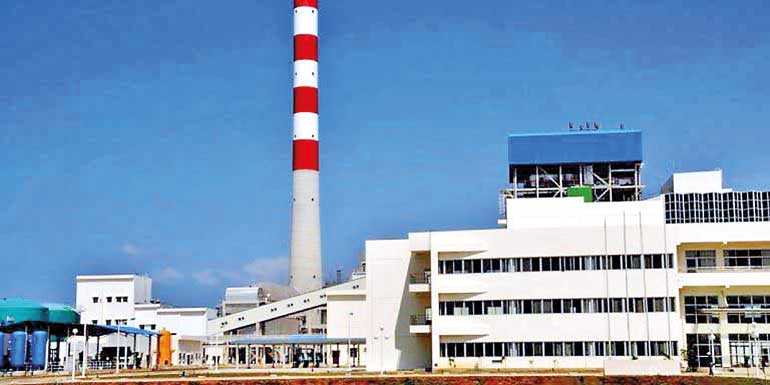Sunday Jan 12, 2025
Sunday Jan 12, 2025
Wednesday, 26 February 2020 01:09 - - {{hitsCtrl.values.hits}}
- CEB sends report on 3 Feb. power outage to PUCSL
- Closure of both plants resulted in loss of 424 MW
- Norochcholai unit 1 under repairs since 14 Oct., only returned to generation this week
- CEB contends it repeatedly urged Power Ministry to provide solutions but was ignored

Norochcholai plant
The unavailability of the 154 MW Kelanitissa Combined Cycle Power Plant and 270 MW Unit 1 of the Norochcholai coal power plant were contributing factors to the unapproved power interruptions in multiple areas of the country on 3 February, a report by the Ceylon Electricity Board stated.
Published online by the Public Utilities Commission of Sri Lanka (PUCSL), the report was submitted by CEB following the instructions of PUCSL earlier this month. The report outlined that the Kelanitissa power plant was unavailable from 3 November 2019, and unit 1 of the Norochcholai power plant was under major repairs since 14 October 2019.
While the power generation of these amounted to a loss of 424 MW, water usage limitations imposed by the Water Management Secretariat (WMS) allowed for hydro power generation of only 650 MW. Solo, wind, and mini-hydro power generation amounted to a mere 30 MW. However, this generation was insufficient, and there was a deficit of 330 MW as only 1,815 MW were generated to meet an expected daytime peak demand of 2100-2150 MW.
In addition to this, Ceylon Petroleum Corporation (CPC) stopped its supply of fuel to CEB, and the report stated, “CEB was expecting, however, that CPC would restore fuel supply at the last minute to avert this situation, as had happened on numerous occasions in the past.”
This resulted in the shutting down of multiple plants, including the 270 MW West Coast Power Plant, from 6 am to 3.23 pm, and all CEB small thermal power plants in Thulhiriya, Matugama, and Kolonnawa (40 MW). The 20 MW ACE Power Plant was also shut down from 5.47 am on 3 February to 9.11 am on 7 February.
The load management that the power situation may call for was discussed at a Power Crisis Committee meeting on 23 January, and the report stated that the Committee was of the view that a total system failure should not be allowed, and system stability should be maintained at all costs.
“After considering all options available, and the importance of load management in the short term and long term, it was decided that there was no alternative other than reducing the demand by load shedding, to maintain the system stability,” the report stated.
Manual load shedding thus commenced at 10.45 am on 3 February, and concluded at 5.02 pm, affecting each customer for two hours. Exempt from the load shedding program were all free trade zones, major industries known to CEB, all base hospitals, and water pumping stations.
In its conclusion, the report stated, “We wish to emphasise that the interruptions to fuel supply by CPC has become a routine problem, resulting from CEB’s inability to meet its financial obligations to independent power producers. If CEB is unable to ensure operation of these plants when one or more of its major thermal plants are unavailable, there is a possibility of repeating a similar scenario.”
The report also stated that CEB had repeatedly urged the Power and Energy Ministry to address this issue, but was yet to receive a lasting solution.
However, a letter dated 24 January and signed by CEB Deputy General Manager – System Control D.S.R. Alahakoon, attached along with the report, stated, “As you are aware, this situation was conveyed to the Power Crisis Committee meeting held on 23 January, chaired by officials of the Ceylon Electricity Board, and permission was granted for manual load shedding if required at any time.”